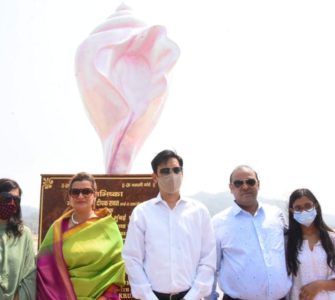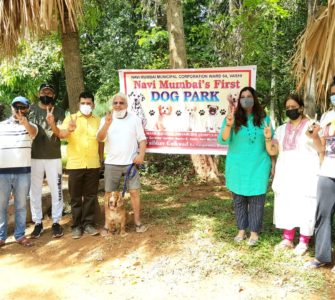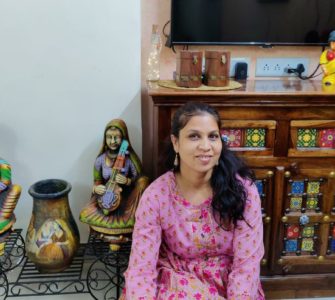It is rightly said that women are the real architects of society. The formidable women of India’s past were never the ones to be subdued and it is really amazing to see that the country boasts of many beautiful historic struc-tures that were comm-issioned by women in the past. With an aim to bring their unsung contributions into the limelight, here are the names of some of those Iconic monuments:
Itimad-ud-daulah, Agra
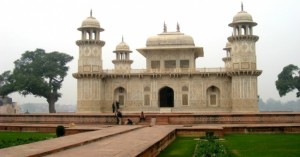 This painstakingly crafted mausoleum is a daughter’s tribute to her father and the first of its kind. Empress Noor Jehan built the first marble tomb in India for her father Mir Ghayas Beg between 1622-1628. The tomb looks like a jewel box in a garden replete with lattice work and the inlay work of red and yellow sandstone along with corals. Built on the banks of the river, this mausoleum is the true inspiration of the Taj Mahal, which was built by Noor Jehan’s son, Shah Jahan, for his wife, Mumtaz.
This painstakingly crafted mausoleum is a daughter’s tribute to her father and the first of its kind. Empress Noor Jehan built the first marble tomb in India for her father Mir Ghayas Beg between 1622-1628. The tomb looks like a jewel box in a garden replete with lattice work and the inlay work of red and yellow sandstone along with corals. Built on the banks of the river, this mausoleum is the true inspiration of the Taj Mahal, which was built by Noor Jehan’s son, Shah Jahan, for his wife, Mumtaz.
Humayun’s Tomb, New Delhi:
Built by Hamida Banu Begum, also known as Haji Begum in 1565-72, the structure is one the earliest examples of the fusion of Persian architecture with Indian motifs in India. Although Sikandar Lodi’s tomb was the first garden-tomb to be built in India, it was Humayun’s tomb that set up a new vogue, the crowning achievement of which is the Taj at Agra. Several rulers of the Mughal dynasty lie buried here. Bahadur Shah Zafar had taken refuge in this tomb with three princes during the First War of Independence in 1857.
fusion of Persian architecture with Indian motifs in India. Although Sikandar Lodi’s tomb was the first garden-tomb to be built in India, it was Humayun’s tomb that set up a new vogue, the crowning achievement of which is the Taj at Agra. Several rulers of the Mughal dynasty lie buried here. Bahadur Shah Zafar had taken refuge in this tomb with three princes during the First War of Independence in 1857.
Hamida Banu Begum had employed Mirak Mirza Ghiyat, a Persian architect to build Humayun’s tomb. Persian influence is clearly seen in the Char Bagh style where the main building stands at the intersection of 4 gardens that are divided through various water channels. Indian architecture in form of Chhatris blends well with the overall architecture of this perfectly symmetrical building. Humayun’s Tomb is one of the 3 UNESCO World Heritage sites in Delhi. 2 others being Red Fort and Qutub Minar.
Rani ki Vav, Patan, Gujarat
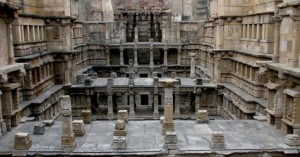 This inverted temple to honour water was built by Udaymati, for her husband King Bhimdev I of the Solanki dynasty in 1063. The step-well was later lost under silt accumulated by a flood in the Saraswati river. Years later, excavations revealed that the silt had helped the carvings remain in the best condition.
This inverted temple to honour water was built by Udaymati, for her husband King Bhimdev I of the Solanki dynasty in 1063. The step-well was later lost under silt accumulated by a flood in the Saraswati river. Years later, excavations revealed that the silt had helped the carvings remain in the best condition.
The step well goes several levels below the ground level. With each level the ornamentation of the walls gets more intricate. There are sculptures of Vishnu’s Dashavatar and of women doing Shringar. There is Vishnu on Shesh Shaiyya. Several regional films have been shot here, and the site was declared a UNESCO World Heritage site in 2014.
Virupaksha & Mallikarjuna Temple, Pattadakal, Karnataka
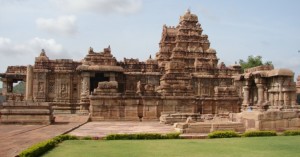 Pattadakal in Karnataka is often referred as the laboratory of Indian Temple Architecture. Located almost in the center of Karnataka, you can find both North Indian Nagar Style and South Indian Dravidian style of temple architecture here. Pattadakal is a group of Indian monuments most of which are temple that have been built by the Chalukyan kings between 7-9th CE. However two important temples here Mallikarjuna temple and Virupaksha temple were built by the two queens of Vikramditya II.
Pattadakal in Karnataka is often referred as the laboratory of Indian Temple Architecture. Located almost in the center of Karnataka, you can find both North Indian Nagar Style and South Indian Dravidian style of temple architecture here. Pattadakal is a group of Indian monuments most of which are temple that have been built by the Chalukyan kings between 7-9th CE. However two important temples here Mallikarjuna temple and Virupaksha temple were built by the two queens of Vikramditya II.
Queen Lokmahadevi built the Virupaksha temple in Dravidian style. It is said that the Virupaksha temple took inspiration from Kailashnatha temple at Kanchipuram and later served as a model for Kailash temple at Ellora. The temple is sometimes called Lokeshwara temple commemorating the queen who built it. Mallikarjuna Temple was built by the queen Trilokmahadevi. It is similar to Virupaksha temple, just a bit smaller. Pattadakal is also a UNESCO World heritage site.
Mirjan Fort, Karnataka
Of all the queens of the country to be remembered today, the Pepper Queen of India holds a very special place. 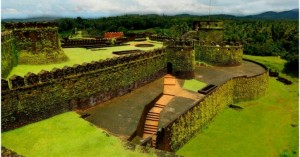 Queen Chennabhairadevi of Gersoppa was nicknamed Raina de Pimenta (The Pepper Queen) by the Portugese for ruling over lands that grew the best pepper. Several artisans came to the queen to seek refuge from wars in distant lands. In turn, they helped the queen build her own fort at Mirjan in the 16th century. Till date, the fort commands excellent views of the mountains and offers strategic safety from invaders.
Queen Chennabhairadevi of Gersoppa was nicknamed Raina de Pimenta (The Pepper Queen) by the Portugese for ruling over lands that grew the best pepper. Several artisans came to the queen to seek refuge from wars in distant lands. In turn, they helped the queen build her own fort at Mirjan in the 16th century. Till date, the fort commands excellent views of the mountains and offers strategic safety from invaders.
Lal Darwaza Masjid, Jaunpur
Bibi Raje or Rajye Bibi of Jaunpur had the Lal Darwaza Majid built for a saint, Sayyid Ali Dawood Kutubbudin, along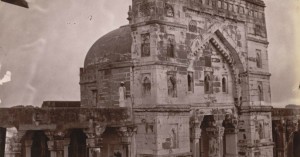 with her palace while she was Queen of Sultan Mahmood Sharqi. Of the monuments she had built from 1447 onward, only a madarsa (school) called Jamia Hussainia still stands. She had also founded the first school for girls in the region during her husband’s reign.
with her palace while she was Queen of Sultan Mahmood Sharqi. Of the monuments she had built from 1447 onward, only a madarsa (school) called Jamia Hussainia still stands. She had also founded the first school for girls in the region during her husband’s reign.
Khayr al-Manazil, New Delhi
The Khayr al-Manazil Masjid in New Delhi was built in 1561 by Maham Anga, Akbar’s wet nurse. An influential woman in the court, she ruled the Mughal empire during Akbar’s childhood. Scholars suggest that the mosque was also used as a madrasa, and that the dalans were classrooms. Some scholars suggest that the mosque’s high periphery wall was due to its function as a women’s madrasa.




